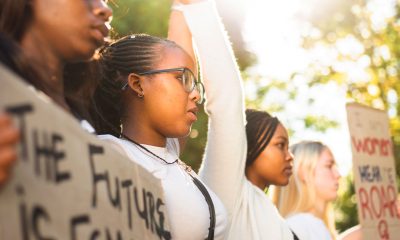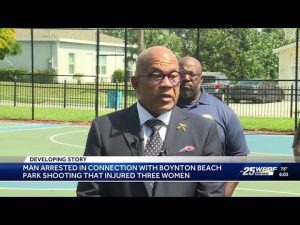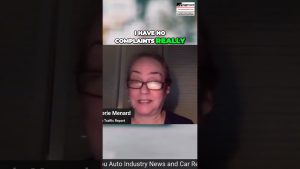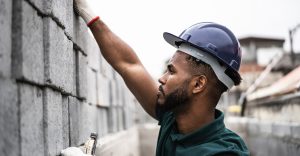Coronavirus
Rideshare and Delivery Workers Deemed Essential but Companies Insist They are Not Employees.

Uber cofounder and former CEO Travis Kalanick with driver Muneeb Rehman in 2016. Photo courtesy of Muneeb Rehman. Rehman is the executive director of the #DriversUnite movement.
Muneeb Rehman has been driving for Uber in New York for almost a decade, but the global pandemic has left him and his family struggling to pay the bills.
Rehman tested positive for COVID-19 in early April, shortly after New York’s shelter-in-place order. He believes he contracted the virus from a rider before the shutdown. Now, both he and his wife are faced with health repercussions from the virus and financial instability.
The pandemic has forced many gig workers like Rehman into an impossible choice — give up their source of income, or continue working and risk exposing themselves to the virus. App-based companies like Uber, Lyft, Postmates, and Doordash classify their workers as independent contractors, not employees, under the guise that they are an app-based platform focused on technology and “innovation.”
But independent contractor status means that gig workers are not eligible for workplace protections such as the right to minimum wage and overtime, paid sick leave, disability insurance, and unemployment insurance. And for many drivers, leaving the company is not an option.
“The driving profession has been taken over by Uber,” said Rehman. “I can leave right now and work for some other company, but because (Uber) comes up with such cheap offers for the riders, they have most of the work.”
Uber has offered some financial support to its workers — mostly geared towards those who have contracted the virus, but Rehman said when he finally received a check it only covered about a quarter of what he would normally earn while driving for the app. He also has not received any personal protective equipment (PPE), even though Uber promised to distribute tens of millions of masks in early April.
“(Companies) send some disinfectant here, maybe some masks there…but they’re not doing it like they promised. Essential workers are not being provided existential protections in the workplace,” said Edward Escobar, founder of the Alliance for Independent Workers and leader of the #DriversUnite campaign.
Last month, several jurisdictions including the state of New York, the City of Los Angeles and the City of San Francisco, ordered all essential businesses to provide personal protective equipment (PPE) to workers. Lyft, Uber and Doordash pledged to provide PPE to its workers, but delivery has been spotty and companies blame delays on supply shortages.
But the global pandemic has only exacerbated a longstanding debate: whether gig workers should become employees, or remain independent contractors.
Just a few months ago, California passed Assembly Bill 5, a landmark bill which makes it harder for companies to classify workers as independent contractors. The law was specifically targeted at apps like Uber, Lyft and Doordash which immediately began lobbying for a ballot measure that would overturn the legislation, and pledged $90 million dollars to get the measure passed in 2020.
On the curtails of the new legislation, Attorney General Javier Becerra announced last week he was suing Uber and Lyft over “allegedly misclassifying hundreds of thousands of drivers, depriving them of worker protections and access to safety net programs.”
We're taking @uber and @lyft to court for allegedly misclassifying hundreds of thousands of drivers, depriving them of worker protections and access to safety net programs. https://t.co/4WTi4YMxsy pic.twitter.com/u6yfAluUiV
— Xavier Becerra (@AGBecerra) May 5, 2020
“AB 5 has been given a bad rap because corporations are against it, and they are the ones that have been using and abusing the misclassification for their benefit — to make millions if not billions of dollars. Of course they want to keep it the way it is,” said Escobar, adding that many gig workers believe that AB 5 will automatically classify them as employees and take away their freedom — but that is not necessarily the case, he says.
“The problem is is that most of these folks out there are called independent contractors but are treated less than part-time minimum wage employees,” said Escobar. “A majority of gig workers…they are enamored with the concept of an independent contractor, but many of them have never been an independent contractor. They’ve never tasted how sweet it is when you set your own rates, terms and conditions.”
While rideshare drivers are struggling because of the decline in traffic, app-based delivery services are still seeing steady demand. In California, Uber Courrier William received a bundle of personal protective equipment from the company about one month after he was prompted by an automated message. The bundle included five masks, one bottle of disinfectant wipes, and a bottle of hand sanitizer.

Uber courier William displays the bundle of personal protective equipment he received from Uber. The company sent out emails offering free supplies in early April, but William said he received the package one month after he submitted a request.
Despite the empty streets and good business, William said he has been avoiding working for the app because of the risks he faces when exposing himself to long lines and crowded storefronts. “It’s really stressful…there is one restaurant in (San Francisco) that I refuse to go to because people don’t social distance there,” he said.
But William says that he is overall pleased with working for the app. “I kind of do get to set my price because I pick and choose the orders that I can take,” he said. “This is how I pay my bills — but I do it because of the freedom that it allows me. At the same time I recognize that I’m younger I don’t have any health problems and I don’t have any kids.”
Escobar says that gig workers don’t necessarily need to become employees to be treated fairly. “We believe both options can exist side by side. They can change their business model, pivot it, relinquish some of the controls let the drivers set their own rates, terms and conditions so they can have independent contractors alongside employees,” he said.
Activism
ESSAY: Technology and Medicine, a Primary Care Point of View
The COVID-19 pandemic, for example, restricted millions of people to their homes, which required reliance on the internet for communication and information. Personal internet searches became essential to understanding information about COVID, human physiology, symptoms, and keeping up with vaccine updates. However, this increase in independent online research resulted in people accessing more misinformation circulating on the internet. This posed a challenge for medical providers trying to treat patients according to research-based guidelines. With so much information within reach, it was difficult for providers to help their patients distinguish between legitimate evidence-based sources and opinion, speculation, and fabrication.

Dr. Adia Scrubb
Special to California Black Media Partners

Technology has enhanced communication between medical professionals and patients; improved patient care management; and eased access to care and information, benefiting both patients and medical clinicians.
However, despite the ease and many conveniences these patient care improvements have ushered in, adequate patient care still includes physician supervision, examinations, and interaction, which present challenges for keeping up with demands on the healthcare system and accurate patient education.
Technology has made more educational resources available at our fingertips, and it has created independence for those who want to know more about their bodies.
The COVID-19 pandemic, for example, restricted millions of people to their homes, which required reliance on the internet for communication and information. Personal internet searches became essential to understanding information about COVID, human physiology, symptoms, and keeping up with vaccine updates. However, this increase in independent online research resulted in people accessing more misinformation circulating on the internet. This posed a challenge for medical providers trying to treat patients according to research-based guidelines. With so much information within reach, it was difficult for providers to help their patients distinguish between legitimate evidence-based sources and opinion, speculation, and fabrication.
Nowadays, patients continuously arm themselves with medical information and challenge clinicians with the research they gather from internet sources to advocate for themselves and their care. This often leaves medical professionals with the complex task of navigating challenging discussions, pointing patients to validated and verified medical information, and following evidence-based medical guidelines for treatment.
Reviewing information before an appointment can certainly make an office visit much more productive, but it is essential to acknowledge the possible bias and limitations of internet searches. Consideration of the author, source, and date of the information may help determine its validity.
Furthermore, simply asking medical professionals for their preferred patient information resources will direct patients to safe and validated information that is in line with standards of care practices. This can help patients better understand the recommendations from their doctors and streamline their internet searches.
Access to individual online medical record information, such as blood tests, MRI reports, and office visit notes, has been a significant expansion of technology in medicine. This digitization of medical information enables and positions patients to take a leading role in managing their care. What used to be multiple sheets of paper in a large file folder is now a click away at any time. Despite these benefits, instant access can be overwhelming for both patients and medical providers, especially since patients, in many instances, can receive their test results online before the physician has had the opportunity to review them.
Patients may review the office visit notes or their lab results out of context or misinterpret information, which can lead to anxiety, confusion, and fear. Clinicians are put in a difficult position when they are not able to suddenly break away from their scheduled office visits to reassure an unscheduled patient about their results and next steps.
Medical providers have tools to assist with identifying sensitive results that need urgent review, and efforts are made to notify anxious patients as soon as possible. However, a patient can be proactive in scheduling a follow-up visit ahead of time to review results with their provider specifically. This can help patients avoid the stress of suddenly trying to get a hold of their doctor when dealing with unclear or concerning results. Normal test results often don’t require explanation, but allowing several days for your provider to work through hundreds of test results before sending messages requesting clarification will help medical professionals prioritize their responses to test results based on medical urgency.
Technological improvements such as online messaging and video/telephone appointments have made access to care much easier both for patients and clinicians. Telephone and video visits have been especially beneficial for patients who are elderly, disabled, or do not have access to transportation. However, the increase — and ease of — access has created much higher demand for physician time both during and outside of the office visit. Test results, patient messages, insurance forms, emails, and medication requests are all pouring in while providers conduct their daily scheduled appointments. Thus, very little time is left in the day for a clinician to respond to every email, fill out every form, and review every lab result when they are responsible for 1,800 or more patients.
This situation, unfortunately, creates a perceived delay in response in a culture where an instant response is expected from messaging and phone calls. But the reality is that the medical provider is constantly playing catch up to thousands of inquiries due to the around-the-clock online access patients now have.
Patients can make the most of their experience and their physician’s time by taking the time to learn their physician’s communication preferences. Despite the multiple modalities of access (telephone, email, video, in-person), a medical provider will have a preferred method of communication with their patients. Some may ask their patients to make an appointment to explain a complex topic, instead of responding to multiple messages. Others may prefer to communicate via phone call if they have to deliver bad news.
There will likely be more medical providers who prefer to communicate only through email or video appointments as remote work becomes more common. If a patient’s communication preferences align with their physician’s preferences, it will create a stronger patient-doctor relationship and foster more effective and impactful communication.
The expansion of technology in medicine has fostered better collaboration, communication, and education between patients and their medical professionals. Combining electronic resources with rapport, mutual respect, and trust for providers will help patients navigate this new landscape of healthcare.
About the Author
Dr. Adia Scrubb, MD, MPP, is a Board-Certified Family Medicine Physician currently practicing in Solano County.
Alameda County
After Years of Working Remotely, Oakland Requires All City Employees to Return to Office by April 7
City Administrator Jestin Johnson recently told city unions that he is ending Oakland’s telecommuting program. The new policy will require employees to come to work at least four days a week. These new regulations go into effect on Feb. 18 for non-union department heads, assistant and deputy directors, managers, and supervisors. All other employees must be back at work by April 7.
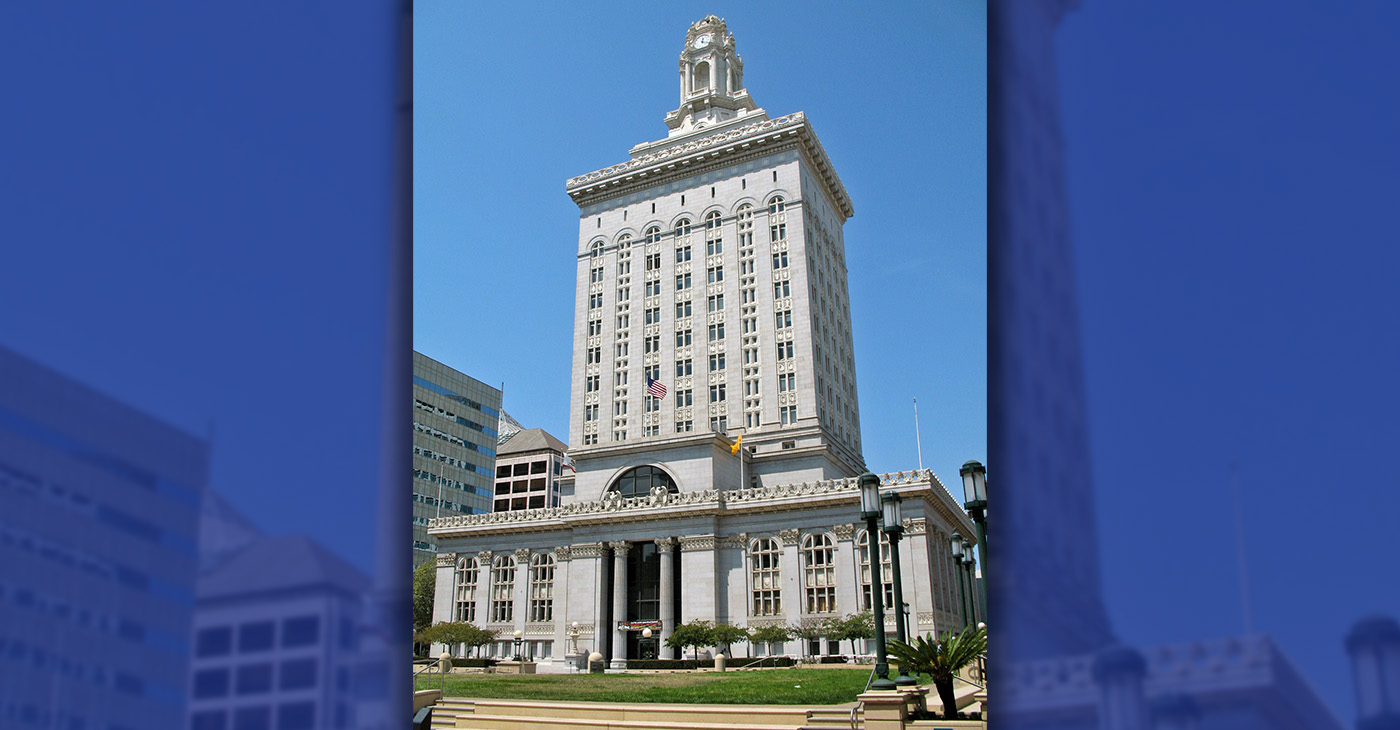
By Post Staff
The City Oakland is requiring all employees to return to the office, thereby ending the telecommuting policy established during the pandemic that has left some City Hall departments understaffed.
City Administrator Jestin Johnson recently told city unions that he is ending Oakland’s telecommuting program. The new policy will require employees to come to work at least four days a week.
These new regulations go into effect on Feb. 18 for non-union department heads, assistant and deputy directors, managers, and supervisors. All other employees must be back at work by April 7.
The administration may still grant the right to work remotely on a case-by-case basis.
In his memo to city unions, Johnson said former President Joe Biden had declared an end to the pandemic in September 2022, and that since then, “We have collectively moved into newer, safer health conditions.”
Johnson said “multiple departments” already have all their staff back in the office or workplace.
The City’s COVID-era policy, enacted in September 2021, was designed to reduce the spread of the debilitating and potentially fatal virus.
Many cities and companies across the country are now ending their pandemic-related remote work policies. Locally, mayoral candidate Loren Taylor in a press conference made the policy a central issue in his campaign for mayor.
City Hall reopened for in-person meetings two years ago, and the city’s decision to end remote work occurred before Taylor’s press conference.
At an endorsement meeting last Saturday of the John George Democratic Club, mayoral candidate Barbara Lee said she agreed that city workers should return to the job.
At the same time, she said, the city should allow employees time to readjust their lives, which were disrupted by the pandemic, and should recognize individual needs, taking care to maintain staff morale.
The John George club endorsed Lee for Mayor and Charlene Wang for City Council representative for District 2. The club also voted to take no position on the sales tax measure that will be on the April 15 ballot.
Bay Area
Authorities Warn: There’s a COVID Surge in California
According to data estimates by the Centers for Disease Control and Prevention (CDC), the coronavirus in California’s wastewater has spiked for eight consecutive weeks. Hospitalizations and emergency room visits have also increased since the rise of the new subvariants. Over the last month, Los Angeles County experienced an average of 389 hospital patients per day that tested positive for the coronavirus. The FLiRT subvariants such as KP.3.1.1. Made up over 2% of coronavirus samples nationwide, an increase of more than 7% last month.
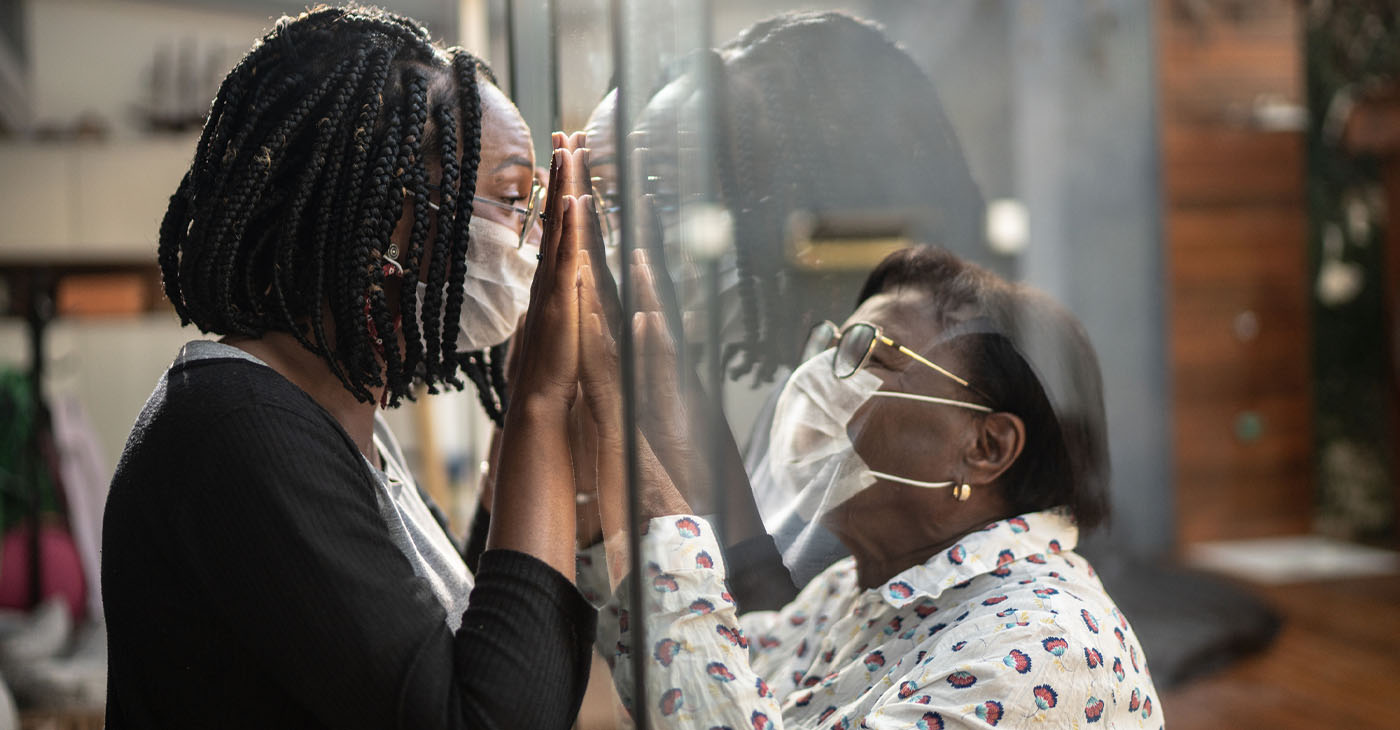
By Bo Tefu, California Black Media
California is experiencing a COVID-19 surge this summer, experts warn, as numbers of infections increased for the third month this year.
State public health authorities attribute the summer COVID surge to more infectious subvariants that have emerged as the coronavirus evolves.
Dr. Elizabeth Hudson, regional chief of infectious disease at Kaiser Permanente Southern California, stated that subvariants of COVID-19 called FLiRT increased in recent months, particularly one named KP.3.1.1 that has become the most common strain in the country.
Dr. Peter Chin-Hong, an infectious diseases expert at UC San Francisco, said that the subvariant KP.3.1.1 seems most adept at transmission.
“The subvariant is the one that people think will continue to take over, not only in the United States, but … around the world,” Chin-Hong said.
According to data estimates by the Centers for Disease Control and Prevention (CDC), the coronavirus in California’s wastewater has spiked for eight consecutive weeks. Hospitalizations and emergency room visits have also increased since the rise of the new subvariants. Over the last month, Los Angeles County experienced an average of 389 hospital patients per day that tested positive for the coronavirus. The FLiRT subvariants such as KP.3.1.1. Made up over 2% of coronavirus samples nationwide, an increase of more than 7% last month.
The majority of the people who tested positive for COVID-19 complained of a sore throat and a heavy cough. Risk factors that can increase the illness include age, underlying health issues, and vaccine dosage.
Health experts stated that the demand for the COVID-19 vaccine has increased in Northern California. However, people are having a hard time getting the vaccine due to the increasing number of cases.
-
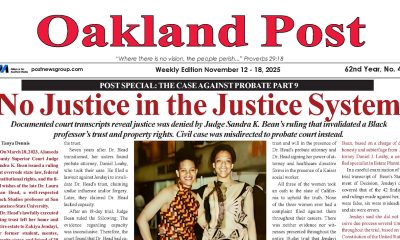
 Activism3 weeks ago
Activism3 weeks agoOakland Post: Week of November 12 – 18, 2025
-

 Activism3 weeks ago
Activism3 weeks agoIN MEMORIAM: William ‘Bill’ Patterson, 94
-

 Activism3 weeks ago
Activism3 weeks agoHow Charles R. Drew University Navigated More Than $20 Million in Fed Cuts – Still Prioritizing Students and Community Health
-

 Bay Area3 weeks ago
Bay Area3 weeks agoNo Justice in the Justice System
-

 #NNPA BlackPress3 weeks ago
#NNPA BlackPress3 weeks agoLewis Hamilton set to start LAST in Saturday Night’s Las Vegas Grand Prix
-

 #NNPA BlackPress2 weeks ago
#NNPA BlackPress2 weeks agoBeyoncé and Jay-Z make rare public appearance with Lewis Hamilton at Las Vegas Grand Prix
-
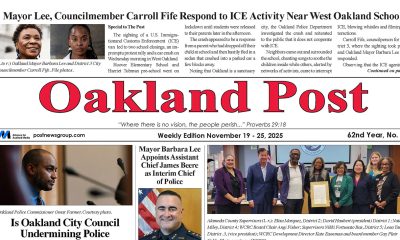
 Activism2 weeks ago
Activism2 weeks agoOakland Post: Week of November 19 – 25, 2025
-

 #NNPA BlackPress3 weeks ago
#NNPA BlackPress3 weeks agoThe Perfumed Hand of Hypocrisy: Trump Hosted Former Terror Suspect While America Condemns a Muslim Mayor









